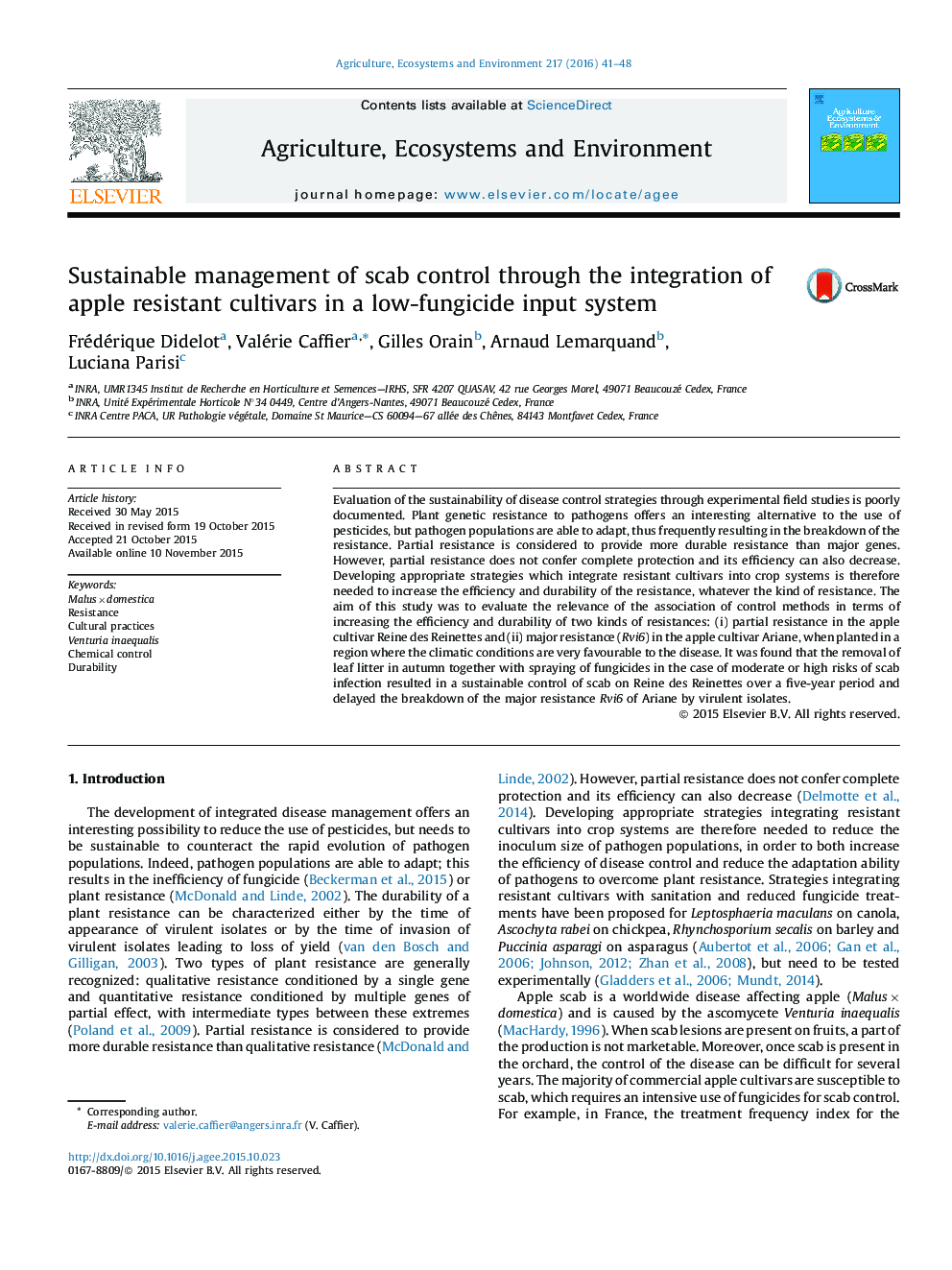| Article ID | Journal | Published Year | Pages | File Type |
|---|---|---|---|---|
| 2413668 | Agriculture, Ecosystems & Environment | 2016 | 8 Pages |
•We evaluate the sustainability of apple scab control in a five-year orchard study.•We associate resistant cultivars, sanitation, and a reduced number of fungicide treatments.•A low-fungicide input system improve the efficiency of a partial scab resistance.•A low-fungicide input system improves the durability of a major scab resistance.
Evaluation of the sustainability of disease control strategies through experimental field studies is poorly documented. Plant genetic resistance to pathogens offers an interesting alternative to the use of pesticides, but pathogen populations are able to adapt, thus frequently resulting in the breakdown of the resistance. Partial resistance is considered to provide more durable resistance than major genes. However, partial resistance does not confer complete protection and its efficiency can also decrease. Developing appropriate strategies which integrate resistant cultivars into crop systems is therefore needed to increase the efficiency and durability of the resistance, whatever the kind of resistance. The aim of this study was to evaluate the relevance of the association of control methods in terms of increasing the efficiency and durability of two kinds of resistances: (i) partial resistance in the apple cultivar Reine des Reinettes and (ii) major resistance (Rvi6) in the apple cultivar Ariane, when planted in a region where the climatic conditions are very favourable to the disease. It was found that the removal of leaf litter in autumn together with spraying of fungicides in the case of moderate or high risks of scab infection resulted in a sustainable control of scab on Reine des Reinettes over a five-year period and delayed the breakdown of the major resistance Rvi6 of Ariane by virulent isolates.
